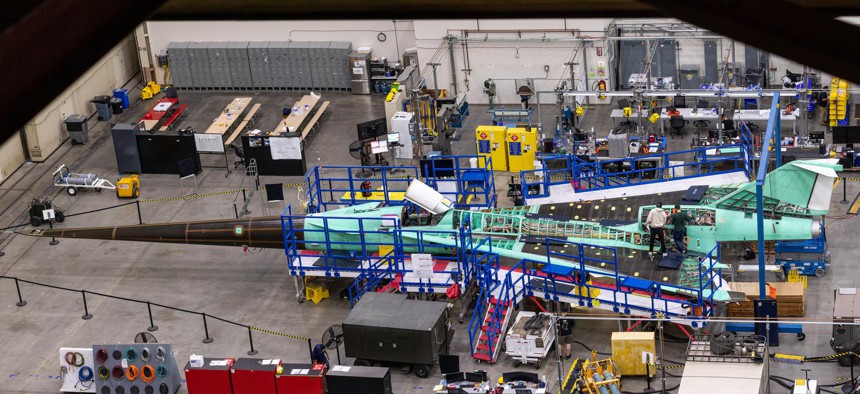
NASA Quesst Mission Could Revitalize Supersonic Travel, but Quieter – By Kirsten Errick (Nextgov) / April 28, 2023
New technologies may enable this type of travel that will sound like a car door slamming and almost cut travel time in half.
After 50 years of the Federal Aviation Administration banning commercial supersonic travel over land, NASA is trying to make this type of flight possible with its Quesst mission, which will gather data to hopefully prove a reduction in the intensity of sound that reaches the ground.
The mission has two goals: design and build NASA’s X-59 research aircraft with technology to reduce the sound of the sonic boom, and then fly the aircraft over a few U.S. cities, collecting data from those communities to see how loud people thought the sound was and sharing this information with FAA and international regulators.
The X-59, a 99.7 foot long aircraft with a 29.5 foot wingspan, is currently being built by NASA and Lockheed Martin to fly faster than the speed of sound—known as Mach 1. The X-59 will fly at 55,000 feet above Earth at Mach 1.4, the equivalent of 925 miles per hour. A normal aircraft typically flies at approximately 550 mph, meaning that the new aircraft could enable people to travel to destinations in almost half the time.


















